Thyroid Surgery
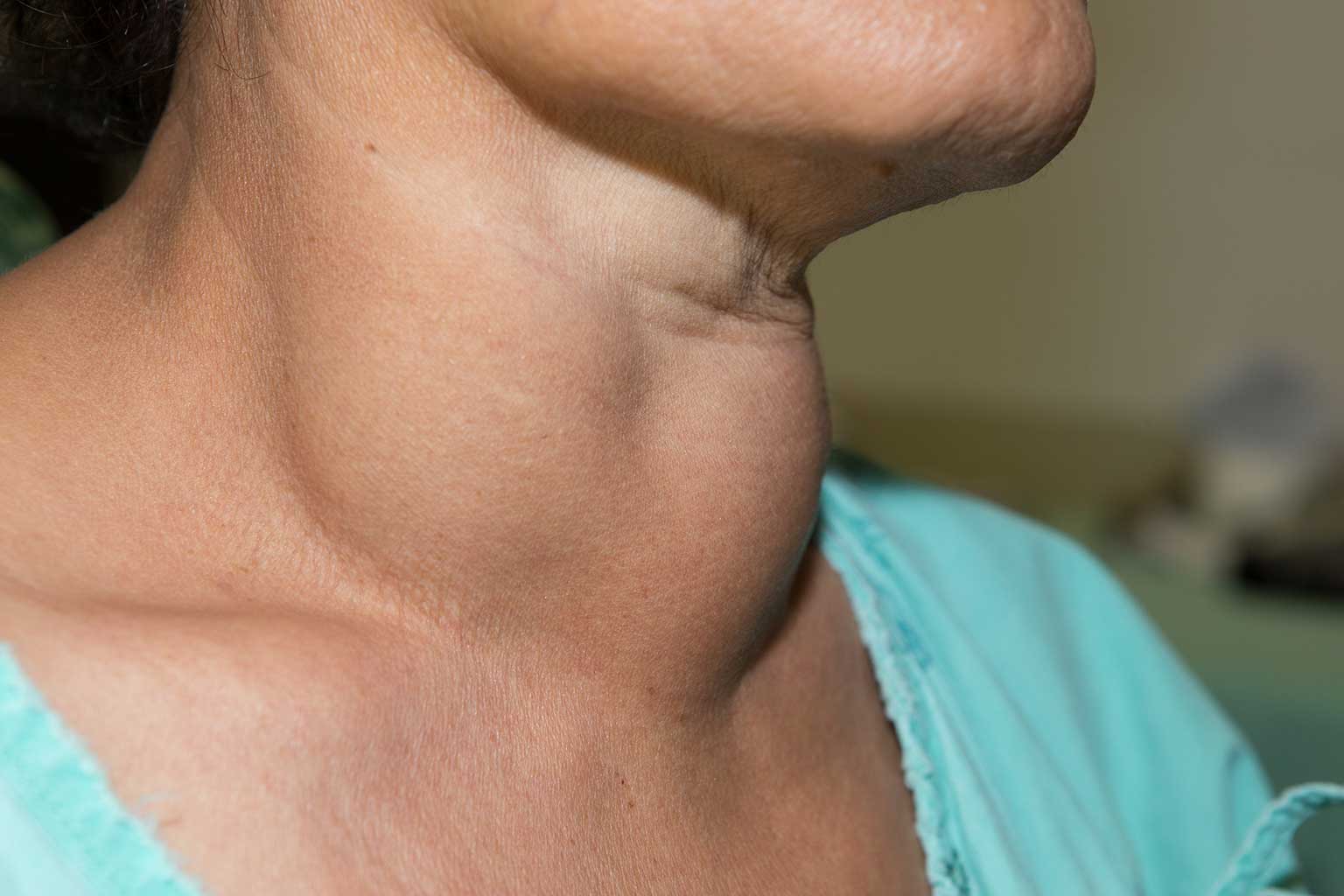
What is Thyroid Surgery
Thyroid issues are not uncommon, and many people need surgery on the thyroid. Whether you need to have surgery because of cancer or you have issues with your metabolism, you likely have questions. This guide will answer some questions people have when they learn they need to have surgery.
WHY IS THYROID SURGERY NECESSARY?
Your thyroid regulates hormones in your body, specifically those that help control your metabolism. A lot of issues can develop in your thyroid. For example, your thyroid can become enlarged, overactive, or develop a small lump. Sometimes, the thyroid can also develop cancer.
WHAT HAPPENS DURING THYROID SURGERY?
Thyroid surgery first requires an IV and general anaesthesia, which will put you to sleep. While you are asleep, the doctor will make a small incision on your neck. The doctor may take out all or part of the thyroid gland. If the issue was nodules, the doctor will perform a lobectomy to remove them.
The doctor then closes the incision with tape or stitches. Some patients will still have a drain left at the incision site to remove fluid build-up. The doctor will remove this drain at a later time.
Oral Cancer Surgery
Tongue & Floor Mouth Cancer (By Local Excision / Hemiglossectomy)
Lip Cancer (Wide Local Axcision)
Cheek Cancer (Wide Local Axcision / Composite Resection of Cheek Cancer)
Mandible Cancer (Alveolus Commandos)
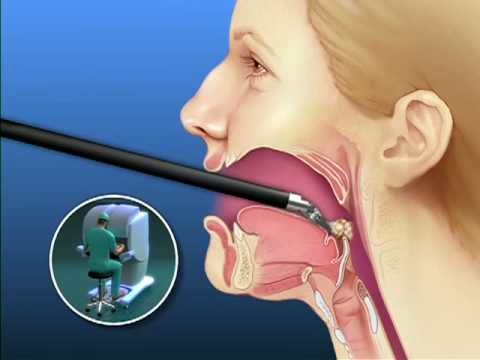
What is Oral Cancer Surgery
Tumor resection: In this operation to remove the entire tumor with adequate surrounding normal soft tissue margins, some normal tissue surrounding the tumor is also removed in an attempt to eradicate as many cancer cells as possible. A small tumor that is easily reached may often be removed through the mouth. For tumors that are larger or harder to reach, an incision may be required in the neck or jawbone.
Mohs micrographic surgery: This surgical oncology procedure, also known simply as micrographic surgery, may be recommended for some cancers of the lip. With this approach, a tumor is removed in very thin slices, with each slice examined under the microscope for the presence of cancer cells. The process continues until no cancer cells are seen. This gradual approach helps prevent the removal of normal tissue, as well as some changes in appearance.
Full or partial mandible (jawbone) resection: When a tumor has grown into the jawbone, a mandibular resection, or mandibulectomy, may be needed. In this procedure, all or part of the jawbone is removed. If the jawbone appears normal in an X-ray and no other evidence of cancer cells is found in the area, just a small piece of the bone may be removed. However, if the X-ray shows cancer in the jawbone, then the entire bone may need to be removed.
Glossectomy: This type of cancer surgery, which involves removal of the tongue, is used to treat cancers of the tongue. When a tumor is very small, only partial removal may be necessary. Larger tumors may require removal of the entire tongue.
Maxillectomy: This operation removes all or part (partial maxillectomy) of the hard palate, the front of the roof of the mouth. A special denture may be created to fill the hole left by this surgery. Your doctor will likely refer you to a prosthodontist, a specialized dentist, to make a prosthetic tailored to your mouth.
Laryngectomy: This surgical oncology procedure involves removing the voice box along with the primary tumor. When a large tumor has grown on the tongue or in the oropharynx, it may be necessary to remove some tissue involved in swallowing to remove as many cancer cells as possible. As a result of this process, food may enter the windpipe (trachea) and then the lungs, which may cause pneumonia. When the risk of pneumonia is high, a laryngectomy may be recommended. With this procedure, the windpipe is attached to a hole in the skin of the neck for breathing. A laryngectomy does not always leave the patient unable to talk. Several techniques are available in some circumstances to restore vocal capabilities after a laryngectomy.
Neck dissection: This type of oral cancer surgery is used to remove lymph nodes in the neck if cancer has spread to this area. Depending on the size and extent of cancer in the lymph nodes, different procedures are recommended, among them:
Partial or selective neck dissection to remove only a few lymph nodes
Modified radical neck dissection to remove most lymph nodes on one side of the neck between the jawbone and collarbone, along with some muscle and nerve tissue
Radical neck dissection to remove almost all lymph nodes on one side, with more extensive removal of muscle, nerves, and veins
Other surgical oncology procedures for oral cancer include:
Pedicle or free flap reconstruction: When a large tumor is removed, the mouth, throat or neck may require repair of some kind. Sometimes, a skin graft may be performed. In this instance, a thin slice of skin is removed from the thigh and reattached in the oral cavity area in need of repair. When the defect is larger, a piece of muscle, with or without skin, may be shifted from a nearby area, such as the chest or upper part of the back.
Microsurgery: Advances in microvascular surgery, which involves attaching blood vessels under a microscope, have led to improvements in reconstructing the oral cavity and oropharynx. These techniques mean that tissue from distant parts of the body, such as the intestine, arm muscle, abdominal muscle, or even lower leg bone, may be used to replace parts of the mouth, throat or jawbone.
Tracheostomy: If a tumor in the oropharynx is too large to remove completely, a hole may be opened in the windpipe and front of the neck to allow for comfortable breathing. Sometimes, removing a tumor may lead to extensive swelling in the neck.
Maxillectomy
Maxilla Cancer
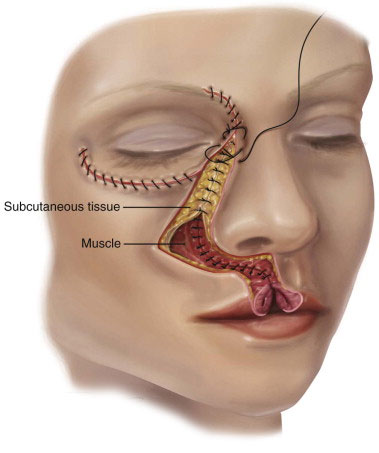
What is Maxillectomy
The maxilla is the upper part of the jaw bone. Surgery to remove the maxilla is called a maxillectomy.
Maxillectomy can be used to treat cancer of the oral cavity (inside the mouth), nasal cavity (inside the nose) and/or maxillary sinuses (pockets found in the bones of the face).
There are a few different types of maxillectomy:
Medial maxillectomy: The part of the maxilla that is next to the nose is removed. This can be done through either an incision (surgical cut) on the face or by using tools through the nostril (nose). Reconstructive surgery is not often needed.
Infrastructure maxillectomy: Removes the hard palate (roof of the mouth), lower part of the maxilla, and teeth. It does not require the removal of the orbital floor (bone below eye). Reconstructive surgery is often needed.
Suprastructure maxillectomy: The upper part of the maxilla and orbital floor (bone below eye) is removed. In some cases, the orbit (bone around eye) may be left in place. Due to the removal of the eye, reconstructive surgery is needed.
Subtotal maxillectomy: Removes only part of the maxilla using one of the above procedures.
Total maxillectomy: Removes the entire maxilla on one side (unilateral), as well as the hard palate and orbital floor (bone below eye). Reconstructive surgery, possibly with prosthetics, will be needed after this surgery.
Neck Dissection
Modified Neck Dissection
Selective Neck Dissection
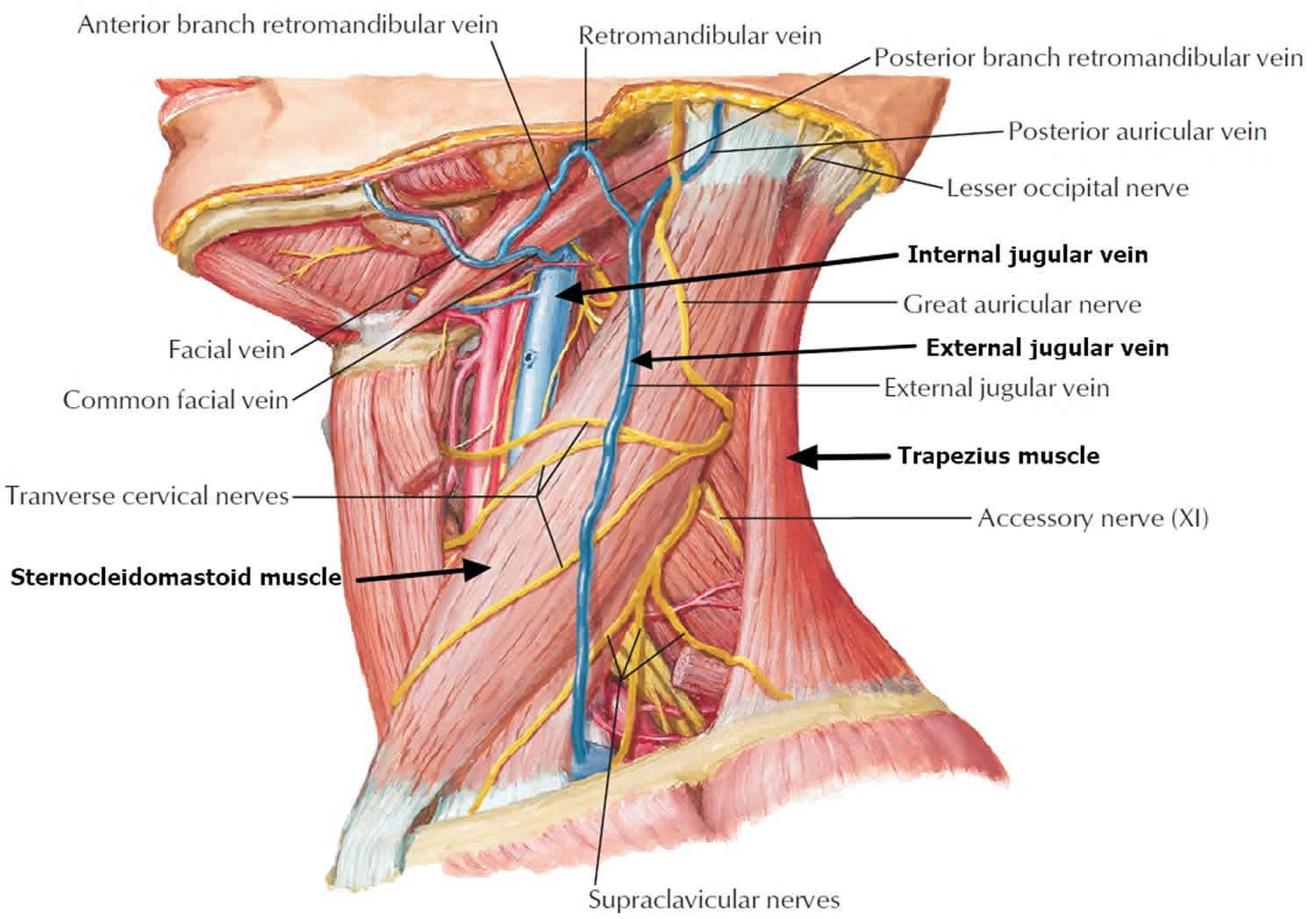
What is Neck Dissection
Neck dissection is usually performed to remove cancer that has spread to lymph nodes in the neck.
Lymph nodes are small bean shaped glands scattered throughout the body that filter and process lymph fluid from other organs. The immune cells in the lymph nodes help the body fight infection. When cancer cells spread from another part of the body, they may get caught in a lymph node where they grow. An individual might feel a non-tender lump in the neck. The cancer in the lymph node is known as a metastasis. When someone undergoes surgery for cancer that has spread to lymph nodes, both the initial or primary cancer as well as the metastases must be removed.
Neck dissection refers to the removal of lymph nodes and surrounding tissue from the neck for the purpose of cancer treatment. The extent of tissue removal depends on many factors including, the stage of disease which reflects the extent of cancer as well as the type of cancer. The most common cancers removed from lymph nodes in the neck include head and neck squamous cell carcinomas, skin cancers including melanoma and thyroid cancers.. In general, the goal of neck dissection is to remove all the lymph nodes within a predefined anatomic area. Many of the lymph nodes removed during surgery will not prove to have cancer in them.
Parotid Tumours
Parotidectomy (Superficial / Total)
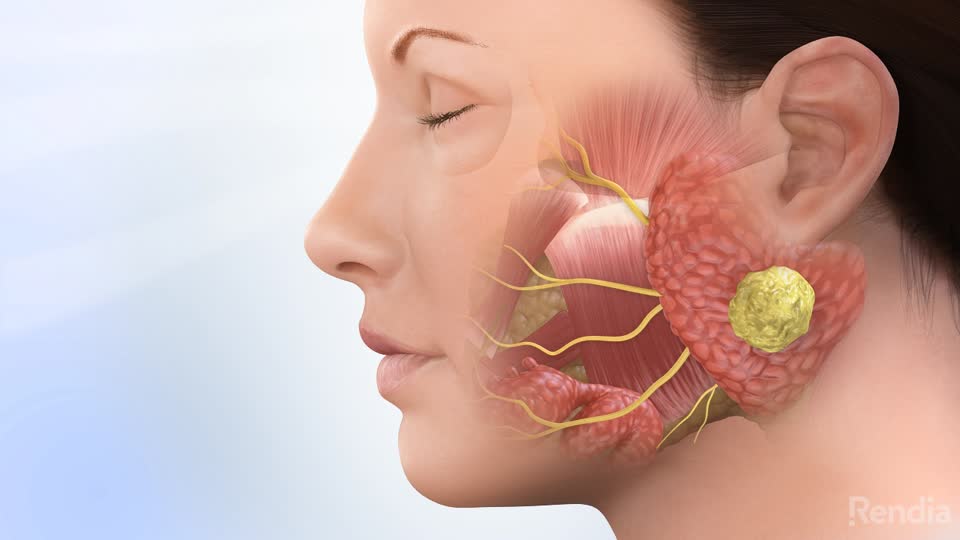
What is Parotid Tumours
The best outcomes from parotid surgery are achieved with complete tumour removal,and include a margin of normal parotid tissue surrounding the tumour specimen. A superficial parotidectomy or total parotidectomy allows for complete excision of the tumour and reduces the chances of recurrence. At the Osborne Head and Neck Institute we perform a complete parotidectomy surgery through a miniincision. These procedures require a high level of skill and advance training. Micro-parotidectomy and enucleation dissections do not provide a significant margin of normal tissue for complete excision of parotid tumours and leads to an increased risk of tumour recurrence in the future and or incomplete primary excision.
Why is parotid surgery performed?
Parotid surgery is most performed to remove a benign or cancerous parotid tumour. Other reasons include the removal of cysts in the parotid gland, or to treat excessive inflammation and infection.
About Recovery
Following parotid surgery, or parotidectomy, recovery will vary based on the complexity of the procedure and condition being treated.
Submandibular Gland Tumuors / Stone Surgery
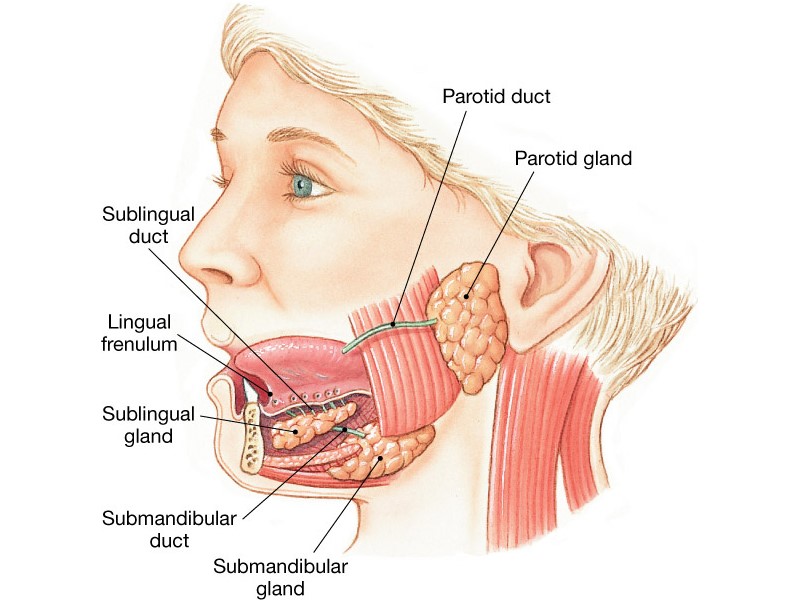
What is Submandibular Gland Tumuors / Stone Surgery
The submandibular glands are 2 of the glands that make saliva. They lie just below each side of the jaw. Saliva flows from the glands to the mouth through a small duct. This duct can become blocked. This may be due to small deposits (called stones) in the gland. Or it may be from narrowing of the duct. More rarely, a tumour forms in a gland. Such a tumour may be cancerous. If the flow of saliva is blocked by a stone or tumour, it can cause pain and swelling. A blocked gland is also at high risk for becoming infected. Submandibular gland excision surgery removes the whole gland. If cancer is present, removing the gland may be all or part of treatment. The other salivary glands will continue to produce saliva.
A cut is made in the upper part of the neck, just below the jaw line, under the chin, behind the ear, or in the mouth.Nearby muscles, nerves, and blood vessels are moved out of the way to expose the gland.Great care is taken to protect the branch of the facial nerve that lies near the submandibular gland. A facial nerve monitor may be used to map the exact location of this nerve. This is a machine with a small sensor that is put onto your cheekthe gland is removed.
Microlaryngeal Assisted Biopsy from Vocal Cord Ulcer
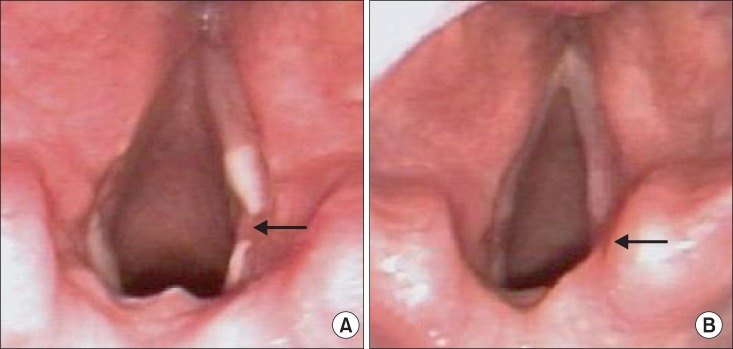
What is Microlaryngeal Assisted Biopsy from Vocal Cord Ulcer
Most cancer experts agree that vocal cord cancer likely starts as small areas of abnormal cells (dysplasia) undergo sequential changes that ultimately lead to the development of cancer. Precancerous lesions may appear as a white or red plaque (called leukoplakia or erythroplakia) on the vocal cord, while cancers themselves are often larger and thicker than the precancerous lesions. Any of these findings on exam indicate that a biopsy or removal of the lesion needs to be done to rule out the presence of cancer. Research suggests that removing precancerous lesions may reduce the risk of developing cancer.
An estimated 10,000 cases of vocal cord cancer are diagnosed nationally each year. Vocal cord cancer is very closely linked with a history of smoking, though nonsmokers may get vocal cord cancer as well. Fortunately, many vocal cord cancers present early because the lesion creates hoarseness that often prompts early evaluation.
MIcro Laryngeal Assisted Laser Guided Removal of T1 / T2 / Laryngeal Cancer
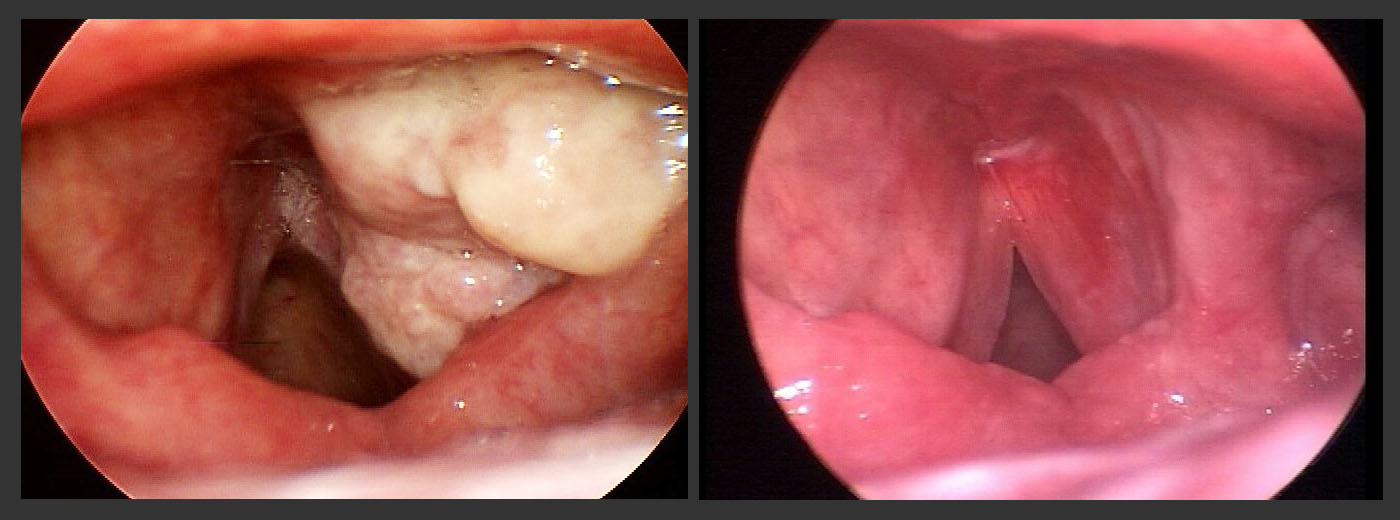
Laser is also used (CO2 Laser) for removal of stage 1 Laryngeal Cancer
Neck Node Biopsy GA & LA
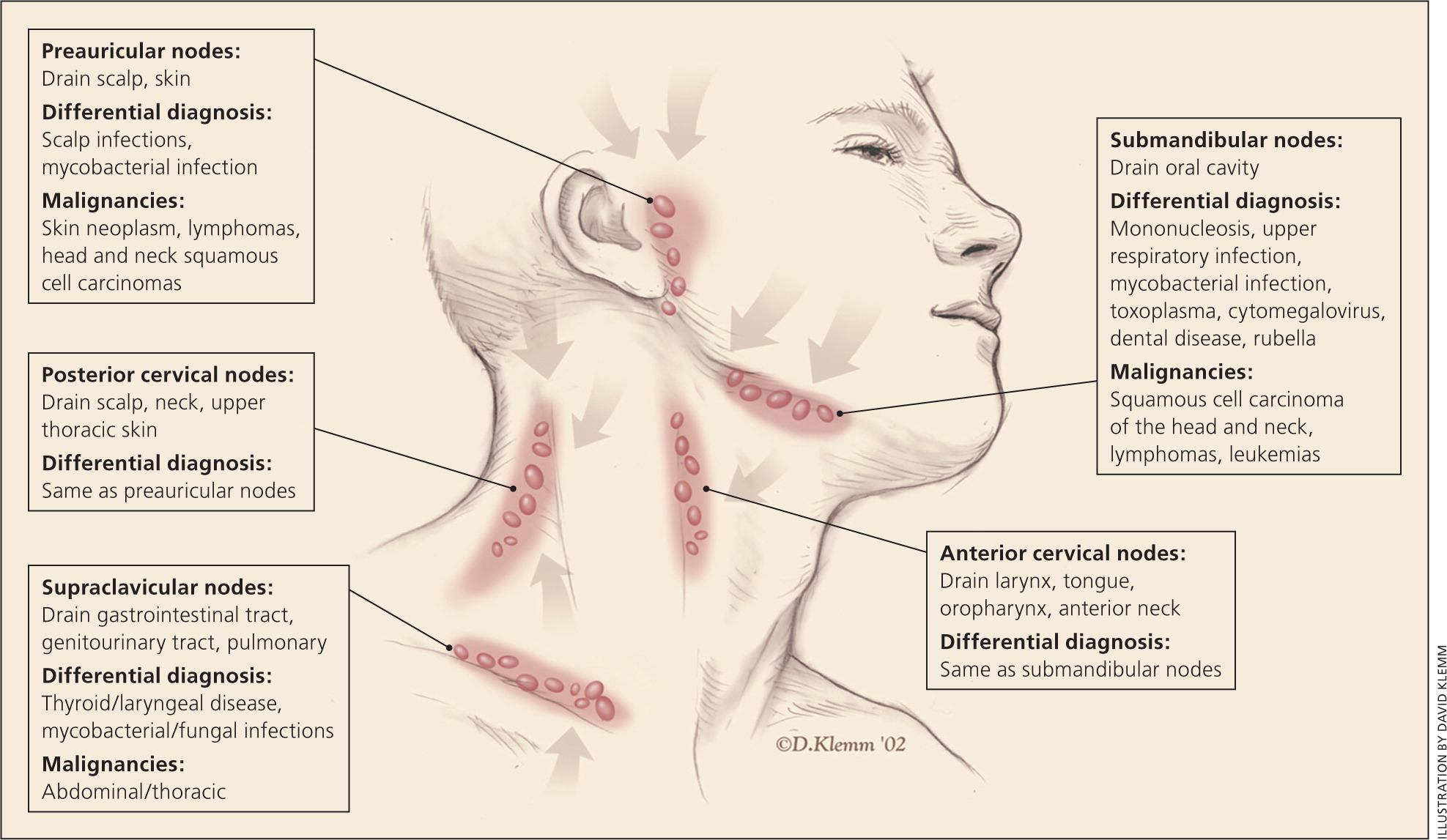
What is Neck Node Biopsy GA & LA
A lymph node biopsy is a test that checks for disease in your lymph nodes. Lymph nodes are small, oval-shaped organs located in different parts of your body. They’re found close to internal organs such as your stomach, intestines, and lungs, and are most commonly noted in the armpits, the groin, and the neck.
Lymph nodes are part of your immune system, and they help your body recognize and fight off infections. A lymph node may swell in response to an infection somewhere in your body. Swollen lymph nodes can appear as a lump beneath your skin.
Your doctor may find swollen or enlarged lymph nodes during a routine examination. Swollen lymph nodes that result from minor infections or insect bites typically don’t require medical care. However, to rule out other problems, your doctor may monitor and check your swollen lymph nodes.
If your lymph nodes remain swollen or grow even larger, your doctor may order a lymph node biopsy. This test will help your doctor look for signs of a chronic infection, an immune disorder, or cancer.
Flap Reconstruction (For Facial Defects) in Cancer
Local Flaps
Regional Flaps
Free Flaps

What is Flap Reconstruction (For Facial Defects) in Cancer
Skin cancer is the most common type of cancer affecting humans and is most commonly caused by cumulative sun exposure throughout a person’s lifetime. Skin that is exposed to sunlight is the most susceptible to skin cancer formation, making the face one of the most likely sites for skin cancer to develop. The three main types of skin cancer include basal cell carcinoma, squamous cell carcinoma, and melanoma. The severity of these cancers can range from very small, superficial lesions that can be cured with topical or cryotherapy to large, invasive tumors that can spread throughout the body and require extensive surgical resection and potentially even radiation or chemotherapy. For this reason, all suspicious skin lesions or areas of ulceration that do not heal should be taken seriously and evaluated promptly.
While many early or pre-cancerous lesions can be treated effectively by dermatologists with topical or non-surgical treatments, more advanced skin cancers require surgical excision for treatment. This poses a particular challenge for skin cancers on the face where scars may be easily visible and have a high impact on facial appearance. Skin cancers on the face are often excised using the Mohs technique. This is performed by specially trained dermatologists who remove the tumor and examine the tissue under the microscope to assure that all the cancer is removed. This technique spares the most amount of normal skin around a cancer and has the lowest rate of recurrence; two factors that are vital for skin cancers involving the face. Once the cancer is removed, there remains the challenge of how to reconstruct the resulting defect without compromising facial aesthetics or function. Facial plastic and reconstructive surgeons are particularly well suited for this type of reconstruction due to their training in plastic surgery techniques and dedication of their practice to only the face, head, and neck.
Lateral Rhinotomy For Limited Nasal Tumours
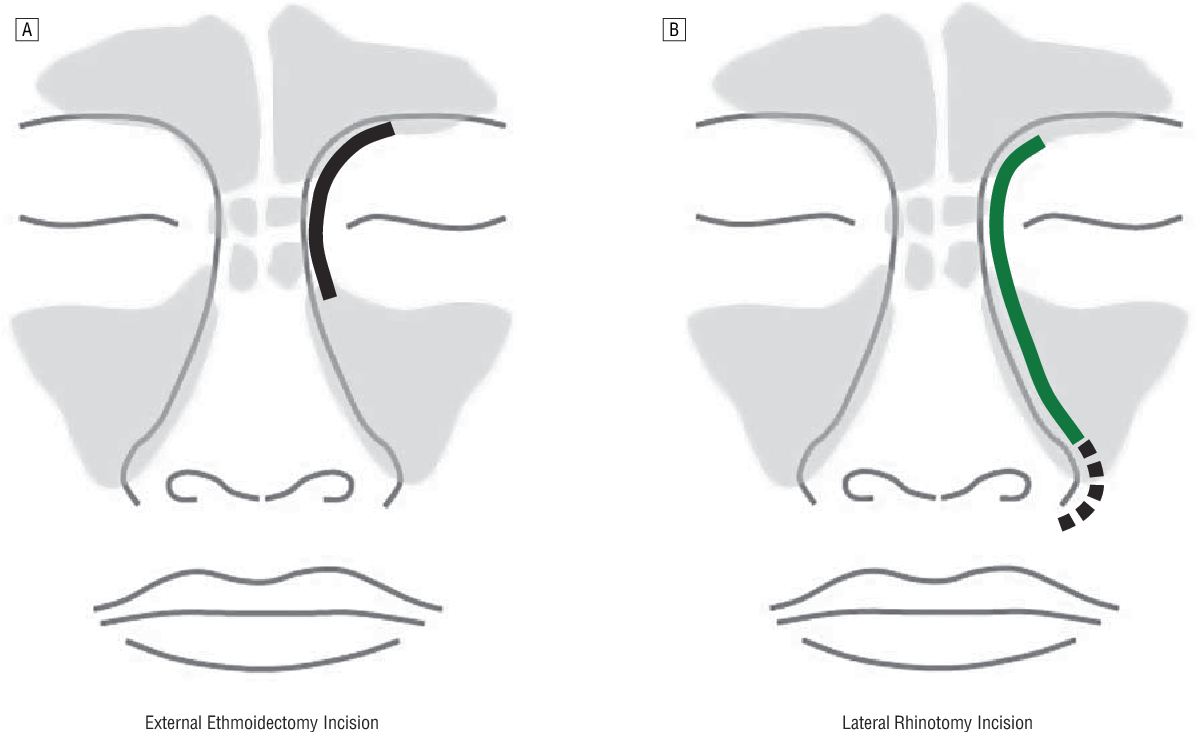
What is Lateral Rhinotomy
The lateral rhinotomy approach is one of the most used techniques for exploration of the difficult Sino nasal masses. Though endoscopic advances haveprogressed rapidly since last few years, but the excellentexposure provided by the lateral rhinotomy approach makesit suitable for resection of Sino nasal masses with extensivespread.
